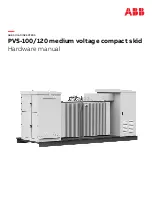
LW120 User Manual
Amplitude
Trigger Modes
Arbitrary Waveforms
Memory Segmentation
Remote Control
stability over time and temperature. If higher accuracy and/or stability
are required, you may order the LW120 with 1ppm reference, or
connect an external frequency reference to the rear-panel reference
input connector.
The output level may be programmed separately for each channel
within from 20 mV to 20 Vp-p into an open circuit, or 10 mV to 10 V into
50
Ω
. Offset may be applied to the output to shift the signal either
positive or negative. Offset and amplitude are inter-related, so make
sure you understand the offset-amplitude ranges before you apply
offset to your signal. A special fine offset generator is built into each
channel, which allows programming of extremely small offset
increments (Available with option LNPC only). This feature extends the
offset resolution to 6 digits and is very useful in applications such as
mixer balancing where few micro-volts could sway the balance either
way.
Besides its normal continuous mode, the LW120 responds to a variety
of trigger sources. The output waveform may be gated, triggered, or
generate a counted burst of waveforms. A built-in trigger generator,
having a programmable period can be used as a replacement of an
external trigger source. The internal trigger generator can be
programmed with resolution of 7 digits.
The Model LW120 generates arbitrary waveforms with 14 bits of
vertical resolution. Any waveform it generates must first be downloaded
to waveform memory. The arbitrary waveform memory is a bank of 14-
bit words. Each word represents a point on the horizontal waveform
scale. Each word has a horizontal address that can range from 0 to
1,048,576 (4,191,280 with the 4 Meg option installed) and a vertical
address that can range from -8192 to +8191 (14 bits). Using a high
speed clocking circuit, the digital contents of the arbitrary waveform
memory are extracted and routed to the Digital to Analog Converter
(DAC). The DAC converts the digital data to an analog signal, and the
output amplifier completes the task by amplifying or attenuating the
signal at the output connector.
There is no need to use the complete memory every time an arbitrary
waveform is generated. Waveform memory can be divided into up to
4096 smaller segments and different waveforms can be loaded into
each segment. The various segments may then be loaded into a
sequence table to generate long and complex waveforms. The
sequence table can link up to 4096 segments, while each segment can
loop up to 1 million times.
The instrument must be used in conjunction with a host computer. All of
its functions, modes and parameters are fully programmable using
SCPI commands and syntax. There are three ways to program the
Model LW120, the first being low-level programming of each individual
parameter using SCPI commands. The second alternative is to use
ArbExplorer for high-level programming. ArbExplorer is a software
package supplied with the LW120 that simulates a mechanical front
Getting Started 1-5
















































